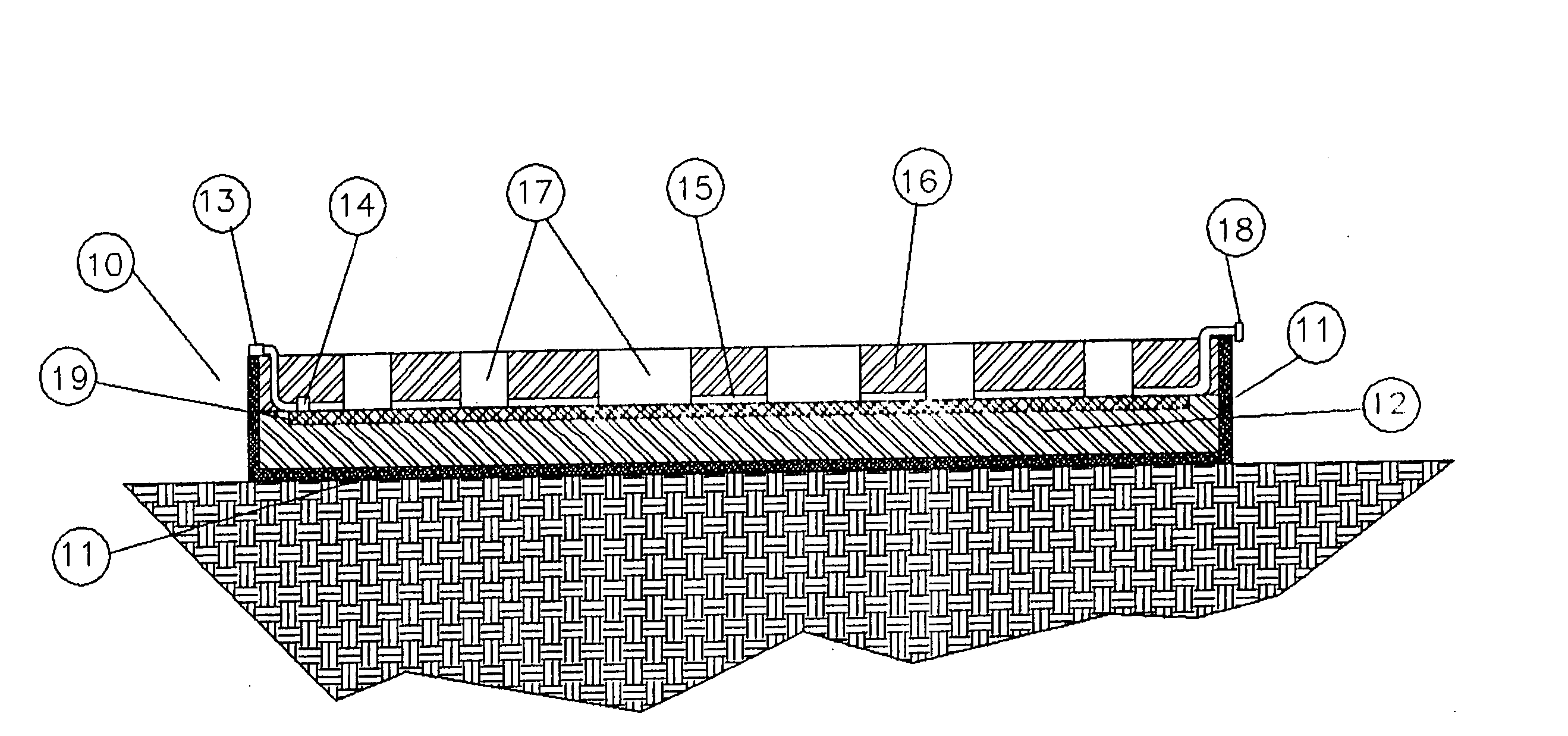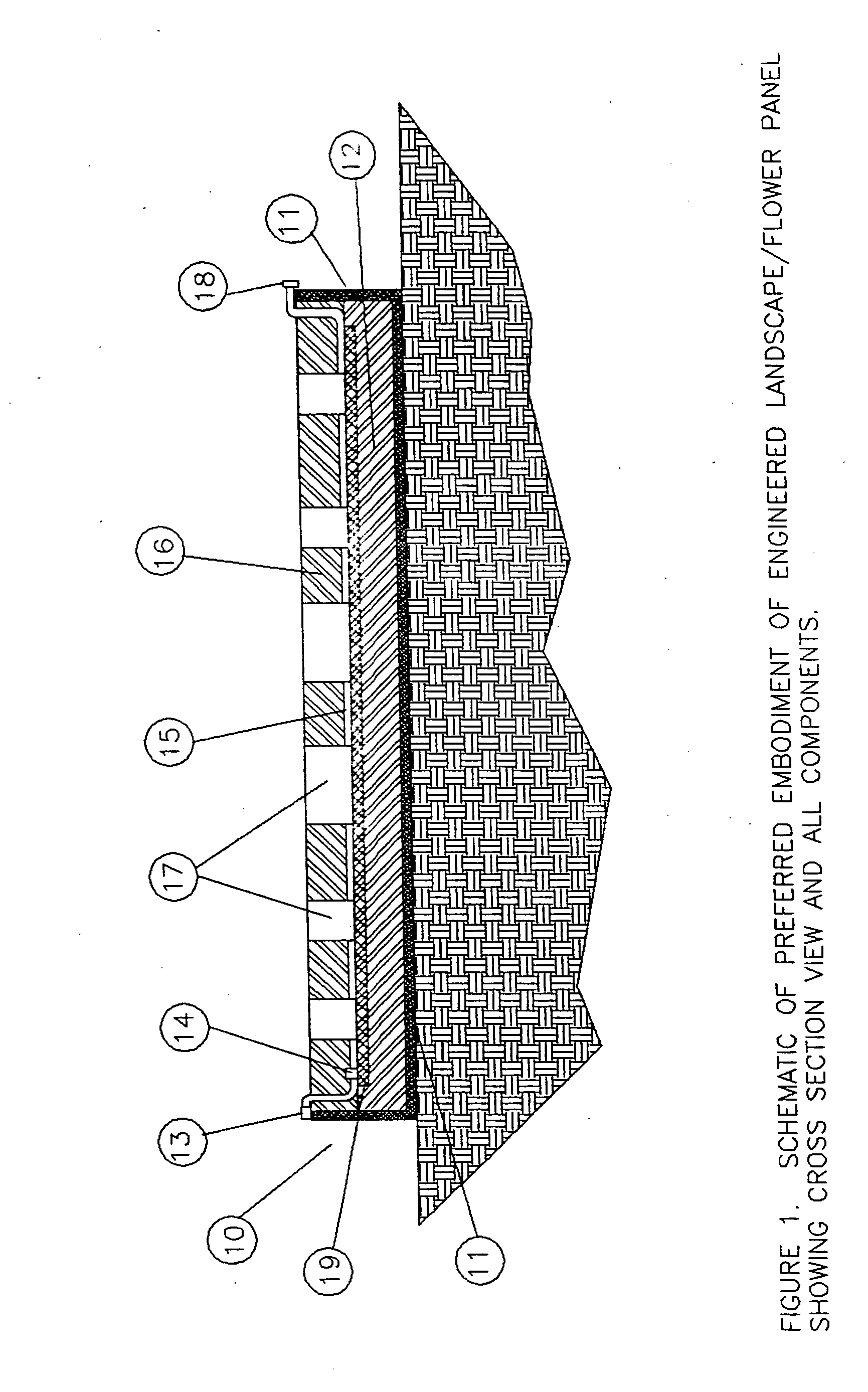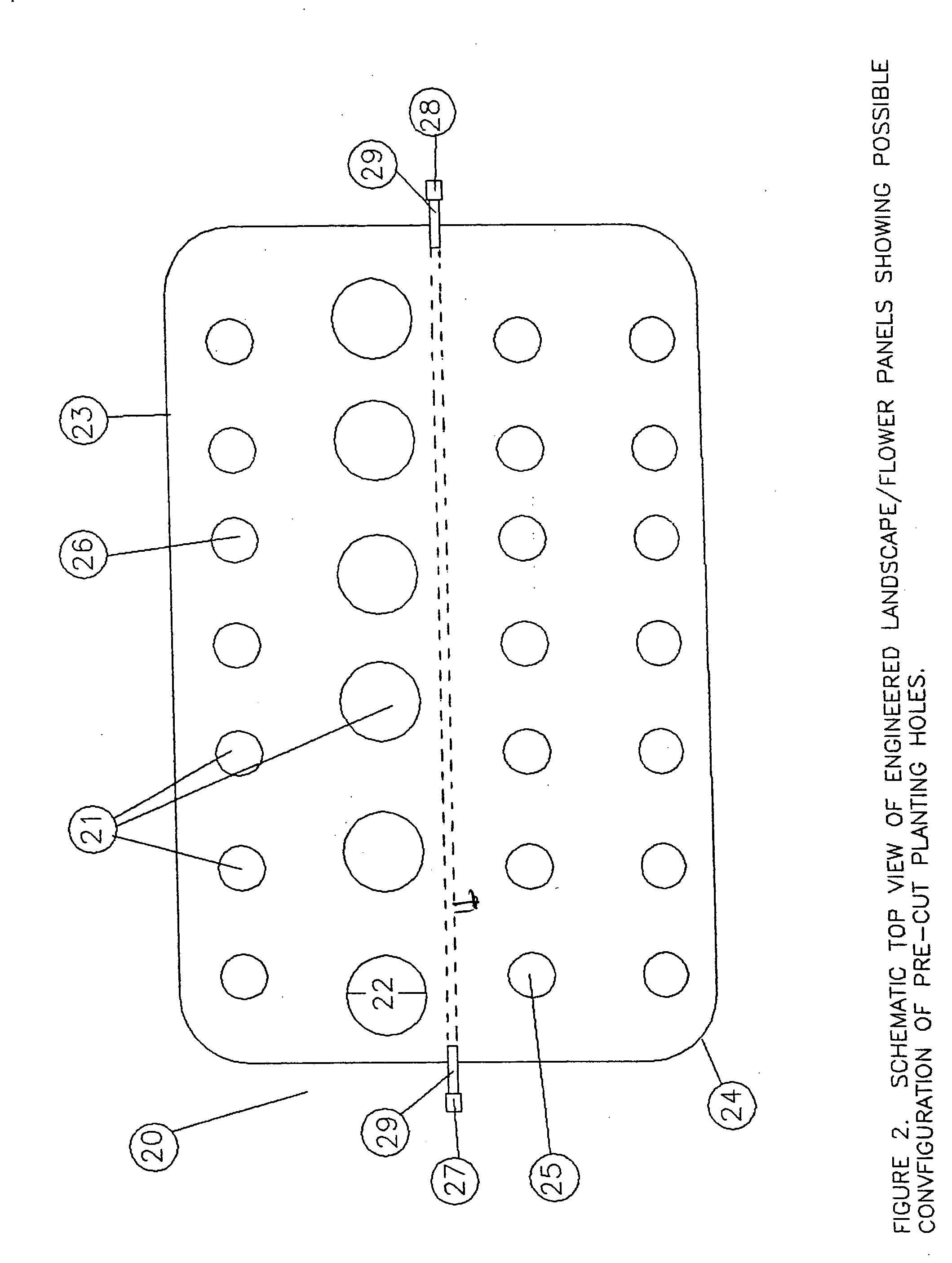Modular, self contained, engineered irrigation landscape and flower bed panel
a self-contained, modular technology, applied in the direction of sewage draining, flowers cultivation, excavation, etc., can solve the problems of high labor intensity, inefficiency of flood irrigation for landscape/flower beds, and increase the labor requirement for maintaining a well-kept flower landscape. , to achieve the effect of reducing the evaporation of irrigation water, reducing labor intensity and water consumption, and reducing the amount of water inpu
- Summary
- Abstract
- Description
- Claims
- Application Information
AI Technical Summary
Benefits of technology
Problems solved by technology
Method used
Image
Examples
Embodiment Construction
FIG. 1. is a schematic of one preferred embodiment of the engineered landscape / flower irrigation panel showing a cross sectional view and all the components it is made up of. The landscape / flower irrigation panel 10 is made up of a non-porous to partially porous bottom and side liner 11 made of a suitable polymer material, the first solid piece of wicking material 12, preferably made of an open cell polyether polyurethane foam, a connection fitting 13 for connection to a pressurized water source, one or more emission devices 14 connected to a distribution tube 15 of suitable tube material such as polyethylene which traverses the panel between the first piece of wicking material 12 and a secondary piece of polyether polyurethane wicking material 16 which has holes 17 of appropriate diameter drilled into it. The holes 17 typically range in diameter from 2 inches to 12 inches to accommodate various diameter bedding and landscape plants. The end of the traversing distribution tube 15 te...
PUM
 Login to View More
Login to View More Abstract
Description
Claims
Application Information
 Login to View More
Login to View More - R&D
- Intellectual Property
- Life Sciences
- Materials
- Tech Scout
- Unparalleled Data Quality
- Higher Quality Content
- 60% Fewer Hallucinations
Browse by: Latest US Patents, China's latest patents, Technical Efficacy Thesaurus, Application Domain, Technology Topic, Popular Technical Reports.
© 2025 PatSnap. All rights reserved.Legal|Privacy policy|Modern Slavery Act Transparency Statement|Sitemap|About US| Contact US: help@patsnap.com



